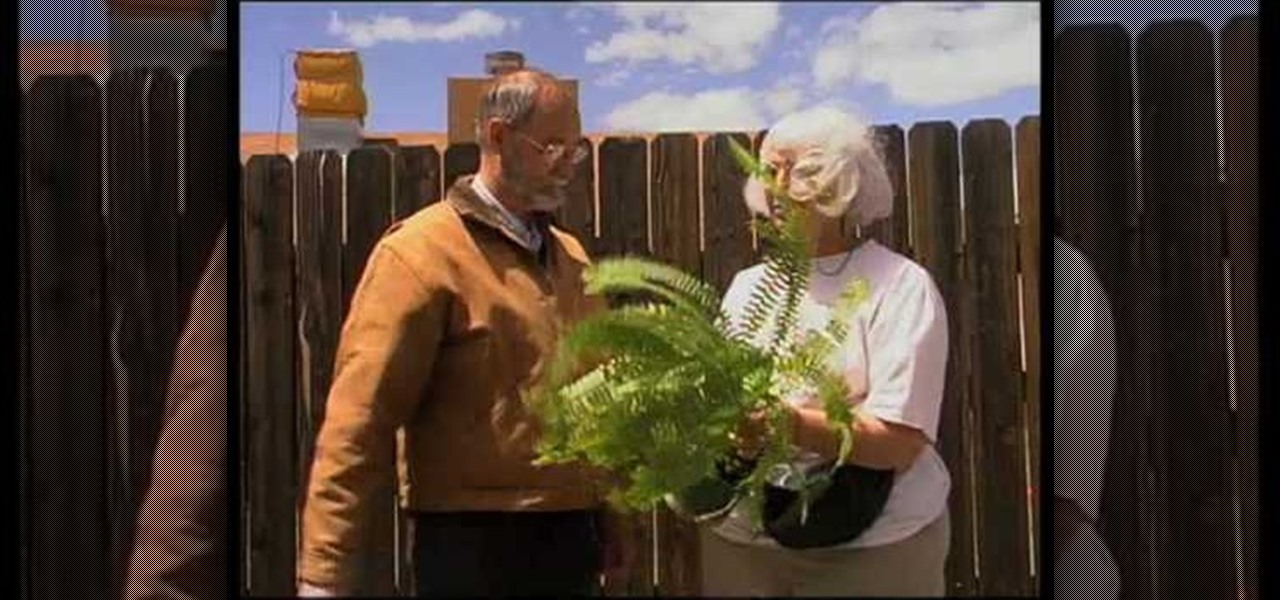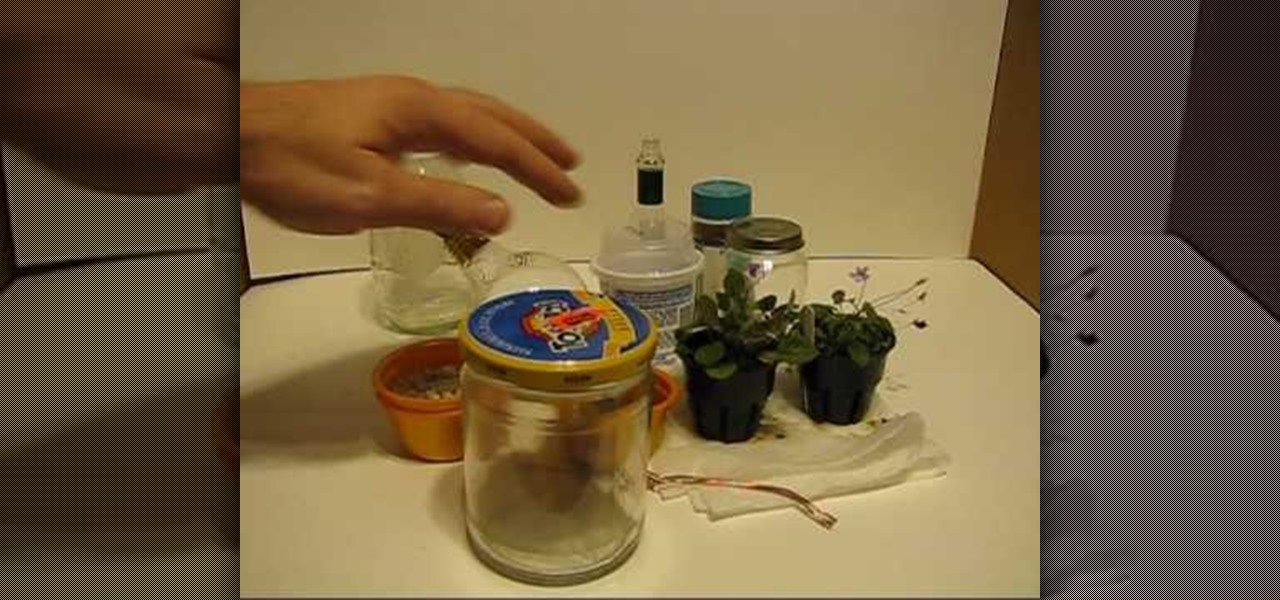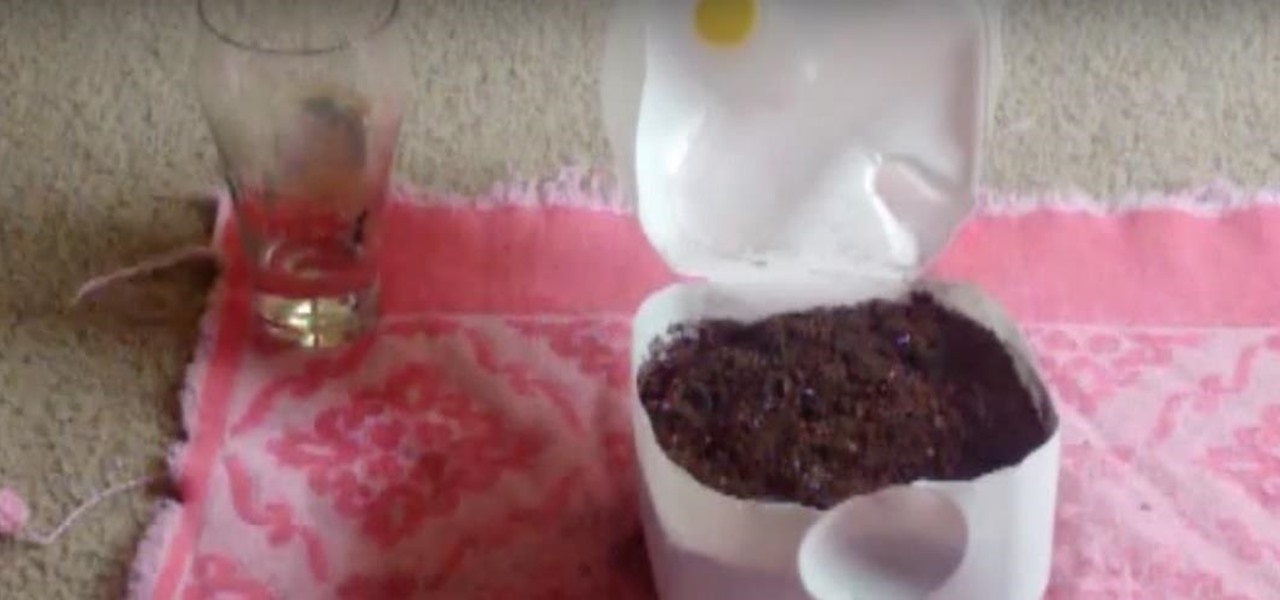
How To: Add compost to soil
Adding compost to your garden soil increases its nutrient content and overall fertility. Watch this video to learn easy and effective methods of adding compost to soil.


Adding compost to your garden soil increases its nutrient content and overall fertility. Watch this video to learn easy and effective methods of adding compost to soil.

This video explains how to solve several problems associated with gardening in arid environments. Rhubarb is a plant that is commonly grown in colder environments. In arid environments, its very important to not over water it, so keep it in a sandy soil with lots of organic compost material. Plants such as the peace lily also need well irrigated soil, so it is important to pot it in an organic potting soil in a location that allows the water to drain away from the pot instead of soaking back ...

In this video, we learn how to transplant raspberry bushes. First, you will want to add in soil to your raised bed or garden where you have your other plants. After you get the soil in and have mixed manure in, cut the bands off of your raspberry bushes and put them in a bucket. The bucket should have water and flower food inside of them. After you have placed the flowers into the bucket, you will then be able to place it inside of the soil. Then pour water over your soil and wait for your bu...

In this tutorial, we learn how to plant narcissus bulbs. To pick out the best bulbs, look for a nice healthy sprout and a nice firm bulb. These plants grow very fast and they grow during the winter. You can plant these and within 2-4 weeks you will have flowers growing. You can plant either a small or large bulb, just make sure it's healthy. To plant these, you can either grow them in rocks and water or soil. To grow in soil, place the bulb all the way into the soil then pour water into the p...

A soil block maker is a cool device for starting your seeds. All you do is fill a container with soil and use the block maker like a cookie cutter. Then you'll have little blocks of soil to plant your seeds in, and you can easily transfer the block to your garden. Now stand back and watch your plants grow!

Packing a suitcase so that everything arrives unwrinkled is an art, but it’s one everyone can learn.

Growing a pineapple doesn’t take a lot of skill, but it does take a lot of patience—two to three years worth, to be exact. Learn how to grow your own pineapple at home with this video guide.

That soil under your feet is not just dirt. It is teeming with life that may not change as fast as we would like when challenged by global warming.

The Sun Sprite Rose has a nice fragrance but you want to keep it healthy by fertilizing it. Roses are heavy feeders so Charlie suggests adding compost in the Spring, really building up the soil, maybe put in some time release fertilizer pellets, then use regular Rose food to keep the Roses really looking good. Another home remedy involves fertilizing with coffee grounds. Coffee grounds sprinkled around Roses about a quarter of an inch to half an inch thick will help Roses grow and bloom bette...

David Epstein provides tips and shows garlic lovers how to plant garlic in their very own garden. It is best to grow garlic in the fall season from the months of September to November when the temperatures are cooler. Some people grow garlic in the spring, but it’s been found that growing garlic in the fall time will give a better crop. To begin, gather some plantable garlic bulbs making sure that you find ones that are either organic or from a seed catalog. At all cost, avoid conventional ...

Testing the pH level of your garden soil can tell you a lot about your garden. Depending on the results of your test you can see what the acid/neutral/alkaline levels are and you can even change the levels by adding different kinds of elements so that you can grow just about anything you want and keep your garden healthy. You can purchase a SoilStick test at Plumstone to see what type of garden you've been working with.

There is nothing like fresh vegetables from the garden. Dave Epstein shows us the secrets to planting peas.

The quickest way to get a gorgeous lawn is to lay sod, uniform patches of grass-covered soil held together by matted roots. It will go more smoothly if you know a few landscaping tricks. Learn how to lay sod for a perfect lawn with this how to video.

The narrator introduces Patrick Quirk as the horticultural expert to whom is going to demonstrate how to safety transplant a cactus. Patrick highlights the ease of doing this if we use the right tools. Patrick recommends using an old garden hose and 2 types of tongs as part of his tools. Safety is paramount to us and to the plant. Cactus need to have is roots loosen and dried, which it different to other plants. It is important to keep the same soil level as you previously had. Patrick finish...

Scott from Spring Hill Nursery with Step by Step Gardening teaches you some basics about hydrangea plants. He talks about how to take care of the plants, how to ensure blooming, and some planting considerations. Hydrangea plants need at least five hours a day in order to bloom so they should not be planted in very shady locations. The blooms can be pink, blue, green, or white, depending on the variety and soil conditions. The blooms can be used in bouquets, or dried for use in crafts. The pla...

Patty Moreno shows us how to make a worm compost bin with cheap, everyday, household items. • Get an 18-gallon rubber storage bin and at least two tops.

Growing populations and higher temperatures put pressure on world food supplies. Naturally occurring soil bacteria may save crops in drought-stressed areas, put more land into crop production, and produce more food.

Chopping up downed trees and sending them to the landfill isn't ideal. It's better to use them as firewood or have them chipped up and use them as mulch material or for a walkway. Never combine woodchips with the soil because they rob the soil of nitrogen, phosphorus and potassium but they're great walkway material and will gradually break down providing nutrients for the soil.

If you need to break up soil for a garden or a new lawn, a rototiller is the tool that will make the job a lot easier. This video from Lowe's will provide you with some key tips to using a rototiller successfully. Mike Kraft shows the best way to use your tiller. Learn what settings you should use for tilling, how you should prepare for tilling soil and garden safety tips.

Are you an avid gardener who tends to your plans on a daily basis? Then before you step foot outside the door today, check out this video to learn a plethora of tips for going green with your gardening.

In this video, we learn how to prepare a raised bed garden for planting. First, clear some of the debris that was left from last year. Then, take a pitchfork and loosen the soil all around the bed. Bring the soil from the bottom up to the top to make it stay loose throughout the bed. Then, start shoveling the soil around the bed and then add in some manure to the bed and mix together with the shovel. Worms in the compost will give you a lot of nutrients and help break down the manure. When fi...

Oh no! You're lost in the wilderness without an adequate survival shelter! Protect yourself from inclement weather by using soil, clay, mud and other materials found in nature to build your own mud hut for protection from the elements.

Soil is arguably one of the most important ingredients when starting a garden. Buying it from the store is easy, but sometimes store bought soil doesn't work as well. Now making your own soil, cannot only help make your garden grow, but gets rid of unwanted fruits and veggies. So in this tutorial, you'll be finding out how to make a trash can compost bing using some easy to find ingredients. So check out this tutorial to find out more and good luck!

Are you a potato nut? Do you wish you could just grow your own potatoes so that you could get them fresh out of the soil? You're in luck! Watch this video tutorial to learn how to plant and grow potatoes in a potato planter bag. You just need some soil, potato seeds, and a potato bag.

Danny Lipford shows us how to filter rocky soil in a flower bed in this informative video. By stapling 2 pieces of 2x2 to a hardware cloth, a mesh is produced that can be clipped onto a wheelbarrow. A home-made sifter of this variety, without a solid frame has the distinct advantage that you can pick it up and toss the filtered out rocks to the side after use. The sifter could also be used to filter the clumps that appear in fertilizer bags, or even masonry sand. The resulting filtered soil i...

Learn how to make a micro terrarium which usually holds 1 small plant in simple steps. You can use any type of container like a light bulb, yogurt container, baby fruit jar, spice container, honey jar, etc. Now select your container and add some soil in it. Place the seeds if you are using them or plant the miniature sinningia in the soil. Use a copper wire to tamper down the soil nicely and close the container lid.

Turn a patch of dirt into a gorgeous green lawn by planting the seeds correctly. Learn how to plant grass seed with this how to video.

There's nothing nicer than being able to pluck fresh herbs from your own little garden – especially when that garden is right in your home! Learn how to grown an herb garden indoors with this how to video.

Expansive Soil and Foundation Cracks. Tim Carter, of Ask the Builder, demonstrates how to drill holes in clay soil and fill them with a special gravel to prevent foundation cracks.

Gardening doesn't have to be a lot of work, especially if you use mulch in your vegetable and ornamental beds and pathways. Mulch is a huge garden time saver because it helps prevent weeds, reduces the need to water, moderates soil temperatures, adds organic matter to the soil as it breaks down and helps your garden look tidy.

In this video tutorial, viewers learn how to make a mini greenhouse milk jug. Begin by cutting the milk jug in half. Make sure to leave one side uncut, leaving the top of the jug on. Then pour some potting soil into the milk jug and plant some seeds into the soil. Make sure to plant the seeds deep into the soil and then pour some water onto the soil. Now tape down the top of the milk jug. This video will benefit those viewers who enjoy planting and gardening, and would like to learn how to ma...

The future of forests looks dreary in the face of a warming climate, but scientists are exploring the relationship between soil microbes and the ability of trees to move to higher altitudes, a key component of their survival.

Chris from Backyard Gardening shows us how to build a raised island garden bed with retaining wall bricks.

This video tutorial shows you how to sow the seeds of the Begonia Semperflorens. 1. Obtain an already grown flower pot.

Just like your gastrointestinal tract, and the soil we walk on — a dust storm has a collection of bacteria, fungi, and viruses all its own called a "dust microbiome."

Antibiotics used to prevent diseases in livestock are creating a world of hurt for humans and the soil we depend on for food. Bacterial resistance to antibiotics is a global health issue. The overuse, underuse, and poor use of these life-saving drugs is rapidly removing them as a treatment option for serious infections in humans—plus bacteria are naturally adaptive.

Learn how to start seeds for planting. Start your own seeds to save money, grow different plant varieties, and extend your growing season.

Cloth diapers are a little bit more work than the disposable kind. No need to worry, with some regular laundry detergent and vinegar your baby will be happy as a clam in his clean and irritant free diapers.

Spring Hill Nurseries shows viewers how to plant Chrysanthemums, or hardy mums, in this video. The mums should be planted in early spring. First, choose a place to plant. You should choose an area that has a lot of direct sunlight. You should also plant in an area that has good soil for growing plants. If this is impossible, mix some compost with the soil in the spot you wish to plant in. If you are planting more than one mum, make sure you have enough room to space them two feet apart.

Charles M., an attorney and bonsai cultivator, demonstrates how to transfer a field grown Japanese Black Pine that is ready for training. A 5-gallong nursery specimen was purchased and planted in the ground with a bonsai compound soil to keep its roots close and compact during trunk thickening. The tree was allowed to grow for three years, with the main foliage under four feet, but with two “sacrifice” branches allowed to shoot out without trimming. One sacrifice branch at the top of the tree...